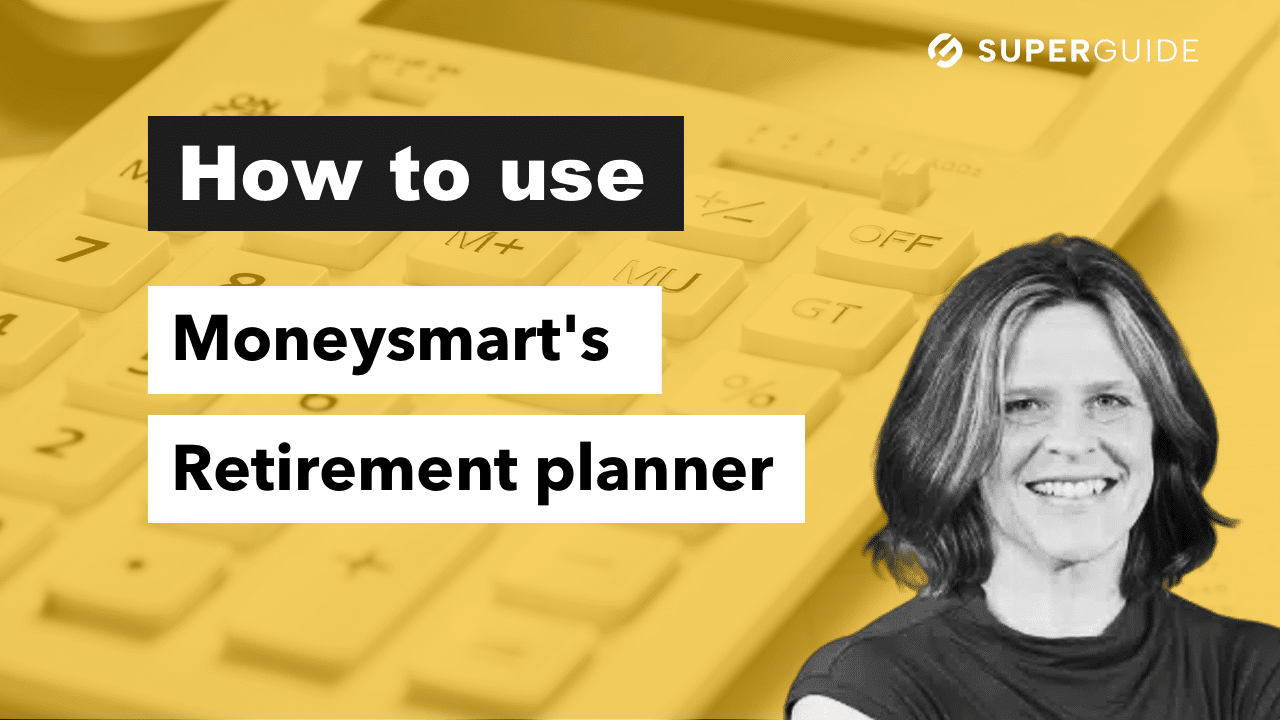In this guide
- Step 1: How do you want to live in retirement?
- Step 2: What will it cost?
- Step 3: How much do I need to save to live the dream?
- Step 4: Reality check. Plan for a long life
- Step 5: How much do I have now?
- Step 6: Are you on track to reach your target?
- Step 7: Closing the gap
- Getting advice and other considerations
- Retirement planning case studies
Some of us dream about the day we can finally stop work and do all the things we never have time for.
Some love their work and want to keep contributing as long as possible, perhaps working part time into their late 60s and 70s.
Others simply put off thinking about retirement, either because they’re too busy, they find the subject boring, or they’re fearful they won’t have enough savings to live comfortably.
Whether you’re keen as mustard or in denial, the sooner you start planning the better your chances of making the most of your retirement years. The stark reality is there could be many of them.
Today’s 65-year-olds can expect to live to an average age of 85 years for men and 87 for women, or roughly 20 and 22 years respectively. And that’s only an average. Half will live longer, many into their 90s.
In fact, many of us could spend almost as long in retirement as we did in the workforce and that requires careful planning. A professional financial adviser can help you create a comprehensive retirement plan, but it’s not difficult to create a basic retirement plan yourself, even if only to help you figure out what questions to ask a professional.
So get the ball rolling by working through these seven simple steps.
Step 1: How do you want to live in retirement?
Think about where you want to live and in what type of home. Maybe you want to holiday overseas every year while you’re still physically active or buy a van and tour Australia.
Do you want to eat out regularly, play golf and lead an active social life, or are you a homebody who enjoys gardening, craftwork or pottering in the shed?
Also think about your need for creature comforts, such as the ability to regularly upgrade cars and digital devices, buy nice clothes, enjoy good wine and pay for private health insurance. You may also want to help the kids financially or help with school fees for the grandkids.
If you are married or have a partner, share your thoughts with them. If you have different expectations about the way you want to live in retirement, it’s better to find out now while you still have time to adjust your plans.
Step 2: What will it cost?
As a rule of thumb, financial advisers suggest you will need somewhere between two-thirds (66%) and 80% of your pre-retirement income to continue living in the manner to which you’ve become accustomed. That’s because it’s generally cheaper to live in retirement as you will no longer be making super or mortgage payments, assuming you own your home debt free.
A good way to begin thinking about your retirement needs and working out a budget is to visit the ASFA Retirement Standard, where you’ll find detailed budgets for different households and living standards. The budgets are updated quarterly and assume you own your home.
In the September 2024 quarter, ASFA suggested single retirees would need an estimated $32,930 a year to live a modest lifestyle while couples needed $47,475. A comfortable lifestyle would cost around $51,814 for singles and $73,031 for couples. Some people will be hoping for a retirement lifestyle that is more than comfortable, especially if they are used to a much higher pre-retirement income than those suggested.
To put these figures in perspective, the full Age Pension is currently $29,754 a year for singles and $44,855 for couples combined. As you can see, this doesn’t stretch to ASFA’s modest budget, let alone a comfortable lifestyle, especially for retirees who are paying rent or still paying off a mortgage on top of other expenses.
Everyone’s income needs in retirement will be different, but ASFA’s sample budgets may get you thinking about your own likely costs on a weekly and annual basis. The comfortable budget allows for higher spending on things such as health, insurances, home improvements, clothing, eating out, entertainment and travel.
Step 3: How much do I need to save to live the dream?
Once you have a rough idea what your ideal retirement lifestyle will cost, work out how much you would need to save to fund it.
To do that, you also need to think about when you want to retire and how long your money needs to last. Not an easy task, given that none of us knows how long we will live.
Say you plan to retire at 67, the age of eligibility for the Age Pension. Using the ASFA benchmark, couples would need a lump sum of around $690,000 to fund a comfortable lifestyle of $73,000 per year, while singles would need around $595,000 to fund a comfortable lifestyle of $51,800 per year. This assumes your investments earn a 6% return and you receive a part Age Pension as your savings run down.
There are a few caveats here. If you wish to retire before age 67 you will need more savings. You can generally access your super tax free once you turn 60 and retire, or from age 65 even if you continue working.
If you want to retire early but expect to supplement your super with a full or part Age Pension, you may need to adjust your retirement age accordingly. From July 2023, the age of eligibility for the Age Pension rose to 67. And if you are a conservative investor and opt for investment returns of less than 6% you will need a bigger nest egg.
Step 4: Reality check. Plan for a long life
As you can see from Step 3, one of the difficulties in planning for retirement is not knowing how long you will live.
The challenge is to ensure your cash lasts the distance however long that may be. You may also have a younger spouse who will be dependent on income from your investments after you die.
Although there is no set retirement age in Australia, your plans are likely to hinge in part on when you can access your super and/or the Age Pension.
Also be aware that your spending patterns are likely to change over the course of your retirement, determined by your health and mobility.
Most people go through three phases of retirement. The timing will be different for everyone, but the sequence is the same.
You can expect to spend more in the early active phase of retirement when you are more likely to travel and spend time outside the home, and the frail later years when spending on health and aged care increase significantly. Spending tends to drop in the middle years when the joints get a little creaky and niggling health problems emerge. As your activity and mobility decline you are more likely to stay closer to home and live a little more simply.
The most overlooked area of retirement planning is aged care, and it’s potentially the most expensive. Most of us want to stay in our own home, but the reality is that many of us will end our days in an aged care facility. So, think about how you might pay for this. Do you plan to sell your home if necessary, or do you want to leave it to the kids?
Government subsidies may reduce out-of-pocket costs but having savings will increase your options and access to high-quality care at home or in an aged care facility.
Step 5: How much do I have now?
The next step is to work out how close you are to making your retirement dream a reality.
Check how much super you have by digging out your latest statement or visiting your fund’s app or website. Add to this any savings and other assets you hold outside super. Subtract your debts, including outstanding loans and credit card bills, to arrive at your current net savings.
Step 6: Are you on track to reach your target?
Now you can work out how much you are likely to have by the time you hope to retire, and how much retirement income that will provide, if you continue your current savings strategy. This will be a best estimate, because future market performance, interest rates and government policy are impossible to predict.
Free retirement calculators such as the TelstraSuper Retirement Lifestyle Planner, Mercer’s Retirement Income Simulator, ASIC’s Moneysmart Retirement planner calculator and other tools can help you with this. You will need to include Superannuation Guarantee payments made by your employer, salary sacrifice amounts or regular voluntary contributions. Don’t forget to add cash, shares, property and any other investments you hold outside super.
Step 7: Closing the gap
If there’s a gap between your retirement dream and your projected savings, you still have choices.
You could make additional super contributions up to your concessional (tax deductible) cap of $30,000 a year. If you have unused cap amounts from previous years and a total super balance below $500,000 you may be able to make catch-up contributions.
If you have more to invest or you receive a windfall, don’t forget you can also make after-tax contributions of up to $120,000 per year or up to $360,000 in any three-year period.
It’s also worth checking the returns you are achieving from your super fund. If the fund is underperforming or if the investment option you have chosen is overly conservative, you could consider switching funds or investment options.
Alternatively, or as an additional measure, you could delay retiring. This has the double advantage of allowing you to accumulate more savings and reduce the number of years you need to draw on them. Or you could lower your expectations, but that’s a last resort.
Keep in mind that most retirees also receive a full or part Age Pension. Receiving even a small amount gives you access to valuable pensioner concessions and discounts via the Commonwealth Seniors Health Card and the Pensioner Concession Card. Find out if you will be eligible for the Age Pension and what concession cards are available for seniors and pensioners.
Getting advice and other considerations
It’s generally recommended you seek independent financial advice well before you retire, but you will be in a better position to get the advice you need if you work through these seven steps beforehand.
While this article focuses on the financial side of retirement planning, true wellbeing in retirement involves more than money. You also need a plan that considers your health, social connection, relationships and a sense of purpose.
Retirement planning case studies
For some worked examples of retirement income planning, check out these case studies:











Thanks for mentioning to think about what type of home you want and where you want to live when planning for retirement. My wife and I are thinking about hiring a specialist to help us because we’re contemplating retirement within the next couple of years and don’t know where we should move if at all. I think it’s a good investment to hire a reputable professional that can assist us in making good decisions if we decide to stop working anytime soon.